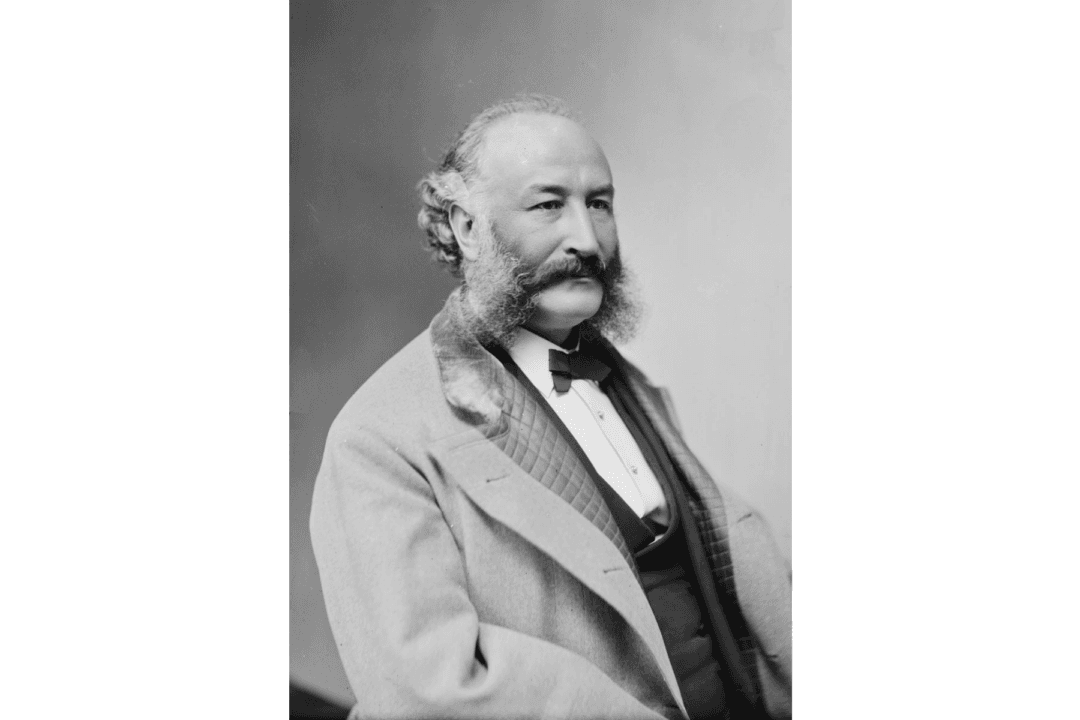Charles Francis Hall (1821–1871) was born in Vermont, moved with his family as a child to New Hampshire, and then moved westward to Cincinnati when he married. It was in Cincinnati that he developed his entrepreneurial spirit by founding a seal-engraving business and then starting two newspapers, the Cincinnati Occasional and the Daily Press. During his Cincinnati days, his business mind was aroused by the curiosity of exploration.

Charles Francis Hall in the only known photograph taken in Washington in the winter of 1870. Public Domain
To Find the Lost Expedition
In 1845, news had broken that Britain’s Franklin Expedition, which had set out to discover the Northwest Passage, had been lost. An award was announced, and by 1848, expeditions embarked to find Franklin, his crew, and their two ships. Numerous attempts were made only to succeed in finding remnants of the fateful voyage, yet arousing rumors of their possible survival.Hall believed he could find the lost expedition. When he met Henry Grinnell, a philanthropist and Arctic exploration enthusiast, Hall convinced him of the possibility of finding Franklin. Grinnell helped finance Hall’s first attempt. In addition, and more consequently, he introduced him to the whalers of New London, Connecticut.
In 1860, Hall met Sidney Budington, who captained the whaling ship George Henry. Budington agreed to sail north in Hall’s search for Franklin survivors. They made it as far as Baffin Island, situated north of Canada’s mainland. (Incidentally, Budington’s uncle, James M. Buddington, had captained the George Henry when it rescued the crew of the icebound HMS Resolute, which had also been searching for the Franklin Expedition.)
Budington introduced Hall to numerous native Inuits they called Esquimauxs (Eskimos), including two English speakers, Hannah (Tookoolito) and Joe (Ebierbing). Hannah and Joe befriended Hall and joined him in the States to promote the exploration of the Arctic. They would often do so in their native garb, which helped garner attention and increase their own celebrity. Budington would navigate all of Hall’s future exploratory endeavors.
Hall and the crew of the George Henry remained in the area of Baffin Island for two years. They sailed the Frobisher Bay, named after Sir Martin Frobisher, that resulted in the important discovery that Frobisher Bay was indeed a bay and not a strait as had been believed.
Hall returned to the States to promote another expedition. While stateside, he wrote the book “Life with the Esquimaux” about his first expedition. Hall’s study and documentation of the Inuit culture was greater than any other at that time.
The publisher-turned-explorer continued to lecture about the Arctic. And despite the passing of nearly two decades, the possibility of finding Franklin Expedition survivors, specifically on King William Island, remained. Grinnell again came to Hall’s aid, along with members of the American Geographical and Statistical Society. In 1864, Hall, Hannah, Joe, and a crew, with navigator Budington, sailed the whaler Monticello to the northwest tip of Hudson Bay, reaching Roes Welcome Sound. Hall remained in the bitter cold for four years, researching the landscape and seeking clues to the Franklin Expedition whereabouts.
Hannah and Joe remained faithful to Hall’s exploratory spirit, but the American explorer ran into trouble when a whaler threatened mutiny. Hall was forced to shoot and kill the mutineer to stave off disaster. It was not until the spring of 1869 that Hall was able to make his way to King William Island. In a sense, he had been correct. He discovered relics of the Franklin Expedition, along with several skeletal remains.
When Hall returned to America, his exploration aspirations changed. His objective would be to reach the North Pole. He received the support of President Ulysses S. Grant and several members of Congress. Hall received the first U.S.-funded commission to explore the Arctic.

“The Polaris (R) on the right and Congress at Godhaven, Disco Island, off the Coast of Greenland.” A wood engraving from Harper's Weekly, May 1873. Public Domain
Provided with $50,000 for the voyage and a retrofitted Union steamer renamed the USS Polaris, Hall and 25 others, along with Budington, Hannah, and Joe, set sail on June 29, 1871. The Polaris made history by reaching the latitude of 82° 29’ N―the furthest of any ship to that point. But the expedition would go no further north as the ice of the Lincoln Sea barred its movement. The expedition turned around and made port in Greenland at a location Hall called “Thank God Harbor.”
Hall would die and would be buried at Thank God Harbor under mysterious circumstances. When the crew, which itself narrowly avoided disaster, returned, they had differing accounts of just what had happened to Hall. Some suggested murder, although the naval courts ruled that out. The on-board doctor diagnosed the death as apoplexy. When Hall’s body was found and exhumed, an autopsy was performed, which indicated the explorer had consumed large amounts of arsenic in the final two weeks of his life.
The man who had no military naval experience nor navigational training, however, still lived a life that made great contributions to the efforts of Arctic exploration, including the study of the Inuit people and that it was possible to live in the harsh conditions of the Arctic if one adopted the ways of the Inuit—an idea that was not accepted by Anglo populations until Hall.
During one of his lectures before the Polaris expedition, Hall said, “The Arctic Region is my home. I love it dearly; its storms, its winds, its glaciers, its icebergs; and when I am there among them, it seems as if I were in an earthly heaven or a heavenly earth.”






